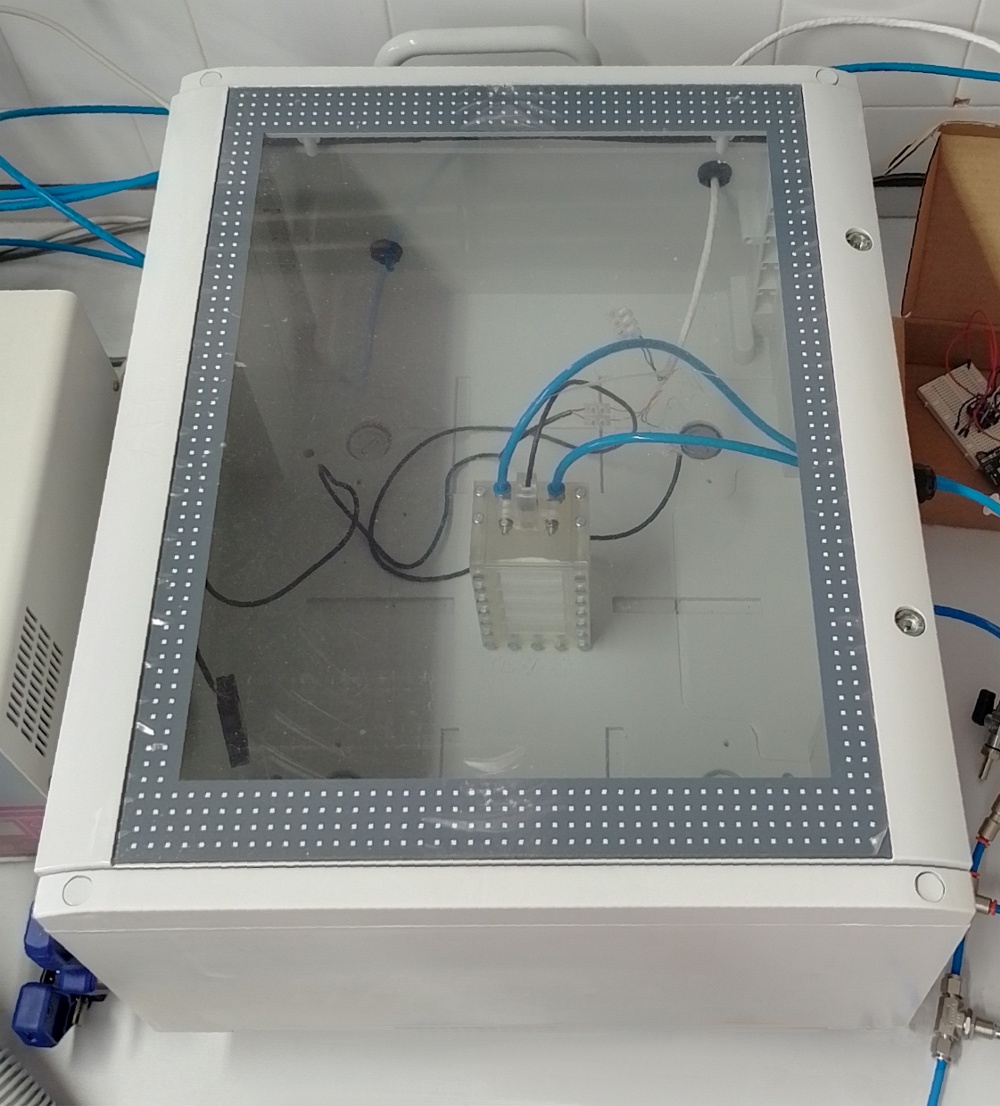CAPTACO2 – New climate chamber

3 March 2023
CAPTACO2, the project developing an atmospheric carbon dioxide capture device, led by PhD student Anna Mas at Rovira i Virgili University – Eurecat in Tarragona, has taken another step forward in its research by improving how the system performance is measured.
Until now, Anna was using a module that comprises a closed volume of air into which a known quantity of carbon dioxide is introduced. Part of this carbon dioxide is absorbed, so its quantity inside the module is less than the quantity that would exist with no absorption. Therefore by measuring the amount of carbon dioxide inside the module over time it is possible to know how much absorption is taking place.
This system has been useful to extract some interesting data but has two important limitations. The first one is that the closed air volume of the module is small. The second one is that it is not possible to use atmospheric air because the concentration of carbon dioxide in laboratory’s ambient air is not constant.
These limitations disappear when using a climate chamber, an element that can be understood as a small-scale room. In our case it is an airtight enclosure with a volume much higher than that of the module, which when closed contains real ambient air with the same carbon dioxide concentration as that of the laboratory’s ambient air.
The module stays inside the climate chamber and absorbs carbon dioxide. By then measuring its amount inside the chamber over time, the module’s absorption efficiency can be known.
The image shows the experimental module inside the climatic chamber. The module has a special gas exchange membrane installed and is controlled from the outside through an array of different tubes and wires.












